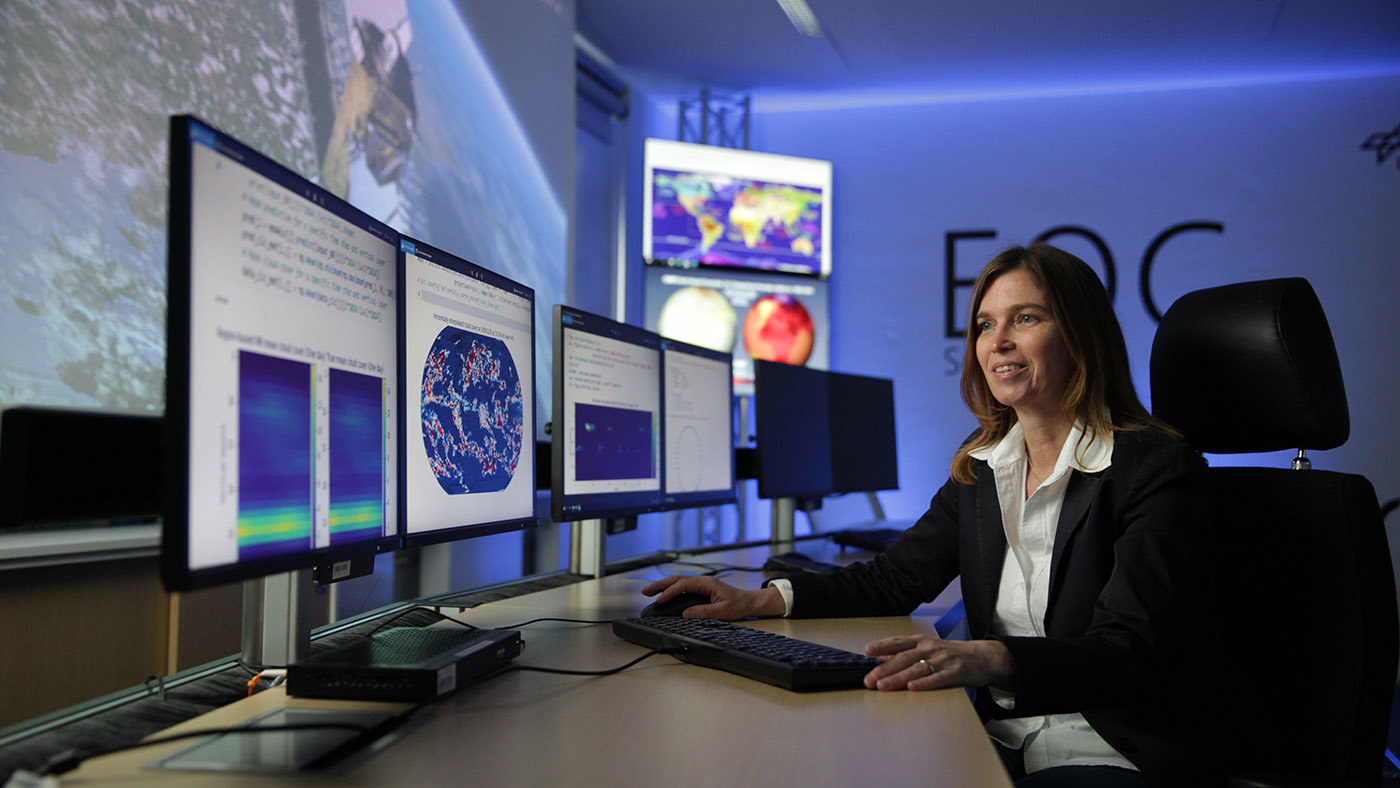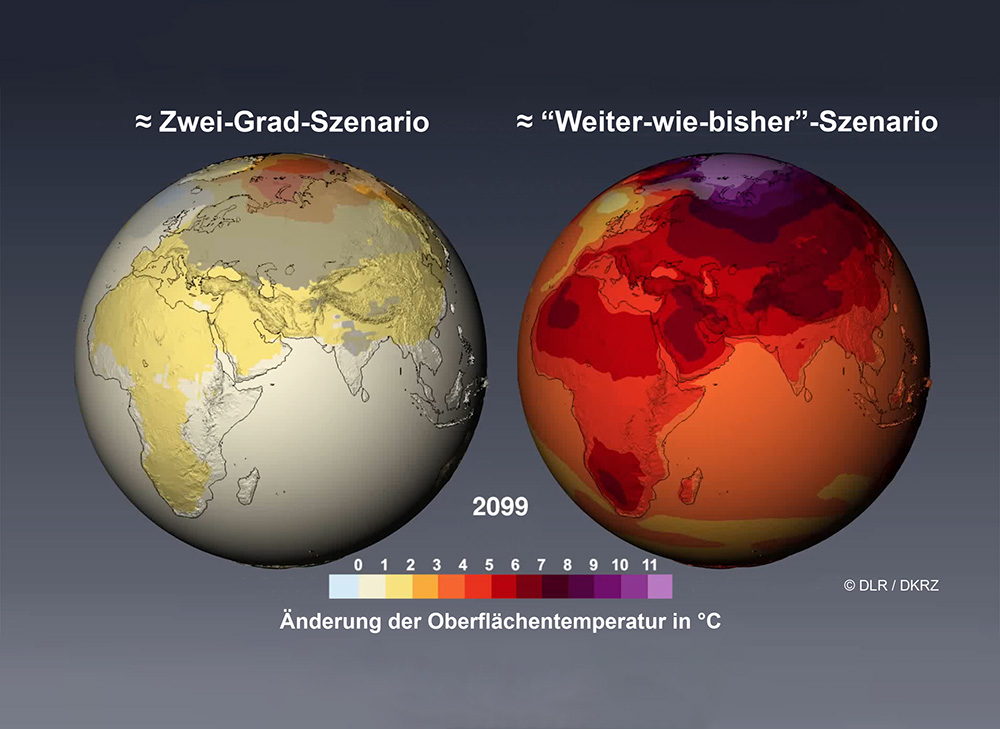
© Philip Halley
Leibniz Prize for Bremen Climate Scientist
Veronika Eyring has won the most globally renowned science prize.
Highest accolade for Bremen climate research: Professor Veronika Eyring from the Faculty of Physics/Electrical Engineering at the University of Bremen has received the 2021 Gottfried Wilhelm Leibniz Prize from the German Research Foundation (DFG) for outstanding work in the field of climate modelling. The most renowned German scientific prize is endowed with 2.5 million euros.
Ms. Eyring, you received this fantastic prize for your research in the field of climate modelling. Can you explain to us in a few words what research you exactly do?
My field of research concerns better understanding and predicting climate change in the complex Earth system with all its interactions and feedback.
The climate change caused by humans is clear and is already having an effect on many aspects of society, the economy, and ecosystems. These effects will become far more visible and worsen in this century – to what extent this will occur depends on how many additional greenhouse gases are emitted by humans. The future development of climate change does, however, also depend on how strong the Earth system’s reaction is to said emissions.
In order to be able to foresee the developments and corresponding scenarios, computer-supported climate and Earth system models are being developed globally. With our research, we are reducing uncertainties in climate predictions. We are able to do this by combining models and observational data with innovative artificial intelligence methods and processes.
What makes your research so important for humankind?
Climate models show us very clearly that it is urgently necessary that greenhouse gases are reduced in order to decrease further rises in temperature.

We are currently carrying out a daring experiment with our planet. With the virtual world of climate models, we are able to show a future with and without climate protection. By doing so, we are providing important foundations for political action options and sustainable climate protection.
With which methods do you work?
In the frame of the “Coupled Model Intercomparison Project” (CMIP) – a World Climate Research Programme project – we are currently analyzing a new generation of climate and Earth system models.
As part of a large international research network, I am heading the development of the “Earth System Model Evaluation Tool” (ESMValTool). Thanks to the development of this software, the routine analysis and assessment of complex Earth system models with observational data was able to be continually improved and expanded. A promising approach is based on the idea of using all CMIP models in order to reveal the climate changes observed today and those in the future. The findings from this are essential in order to continually improve the models and are an important step in reducing the uncertainties in predictions of future climate change.
With this work, my team at the Institute of Atmospheric Physics at the German Aerospace Center (DLR) and my Climate Modelling Department at the Institute of Environmental Physics (IUP), University of Bremen, contribute significantly to CMIP, which I led between 2014 and 2020. The findings also flow into the Intergovernmental Panel on Climate Change’s (IPCC) Sixth Assessment Report, for which I currently hold the role of Coordinating Lead Author on the topic of “Human Influence on the Climate System.”
“Climate models show us very clearly that it is urgently necessary that greenhouse gases are reduced in order to decrease further rises in temperature.”
What are the urgent and important questions in your field of research?
We ask ourselves which processes are responsible for the uncertainties in climate forecasts. For example, why is it the case that when the CO2 level in the atmosphere doubles that a large span of 2 to 5 degrees in temperature increase is shown in various models? And how does the effectiveness of carbon absorption via photosynthesis in plants change? In order to answer these questions, we need to go down new climate modelling paths.
Small-scale processes - imagine cloud formation for example - need to be approximately shown in complex models. That is why there is potential in high-definition simulations, in which small-scale processes can be explicitly calculated. Such simulations are, however, very CPU-intensive. That is why I am particularly expecting there to be breakthroughs stemming from the combination of differing approaches, namely high-definition model simulations, observational data, and machine learning processes.
To what extent does AI help with the prediction of climate developments?
With the Synergy Grants from the European Research Council’s “Understanding and Modelling the Earth System with Machine Learning” (USMILE) project, which started in 2020, I, as a corresponding principal investigator of an interdisciplinary team, expanded my research work to include the field of artificial intelligence (AI). Our team develops machine learning processes in order to continue to improve the understanding and modelling of the Earth system.
We can use high-definition simulations that are only available for a short period – only days or months – with observational data as information to train neural networks. These can then be implemented in Earth system models and enable a much better representation of clouds for example, even in a low-definition model, than has been possible to date. Moreover, we are working on investigating causal relations between climate fluctuations and extreme events, such as droughts, using methods such as deep learning.
Machine learning has extraordinary potential to push climate research forward and create new research areas. Based on the bridge between physics and machine learning, we hope to revolutionize the modelling and analysis of the Earth system and to contribute to more robust climate projections in the long term.
One newspaper quoted both of your former physics teachers from high school in Bad Neustadt. You apparently investigated matters with particular intensity as a school pupil. Was that the foreboding of an outstanding career in science?
I had two amazing teachers who awoke my love for physics with challenging lessons from the 10th grade onwards. Soon it was very clear to me that I wanted to study physics. After my high-school qualifications, I was still convinced and enrolled at the Friedrich-Alexander-Universität Erlangen-Nürnberg.
What exactly attracted you to physics and climate modelling?
Especially theoretical physics fascinates me. My career plan actually became clear in 1995, when I was trying to find a topic for my PhD. Even back then, international climate researchers were warning of climate change caused by humans. That piqued my interest.
I find it mesmerizing that we are able to reproduce the complex Earth system with all its physical and biogeochemical processes, interactions, and feedback so accurately on a computer. And that we can better understand the relations within the Earth system using these models that are based on physical laws of nature.
Developing new ideas and methods, always finding out more about the Earth system, and learning – that is a fascinating job that I continue to enjoy greatly. It is particularly fulfilling that our research provides important information for society and politics.